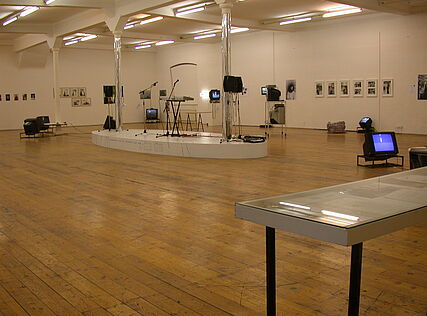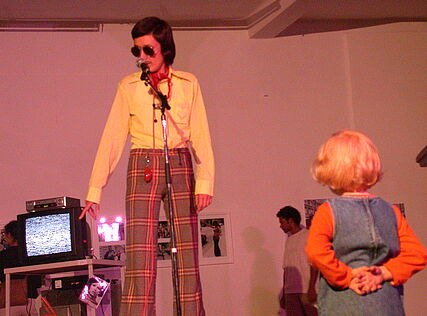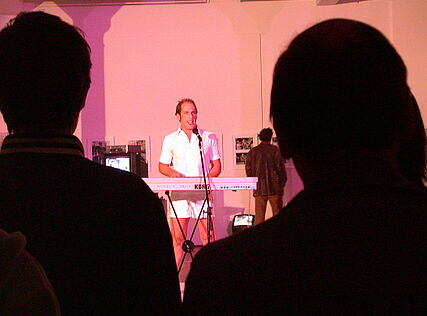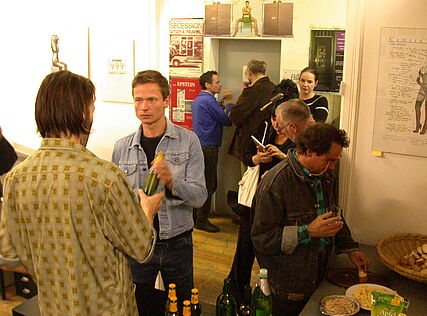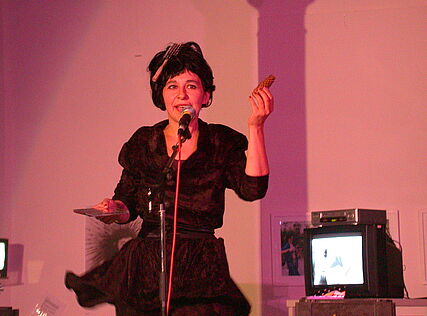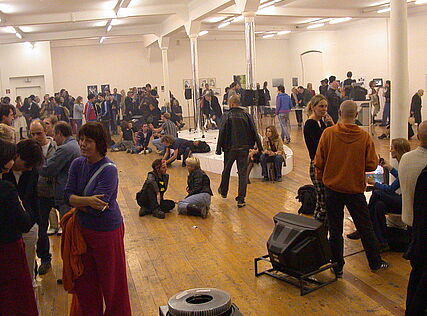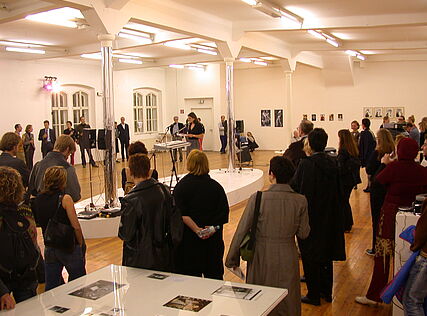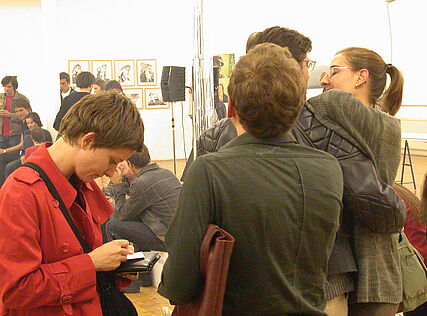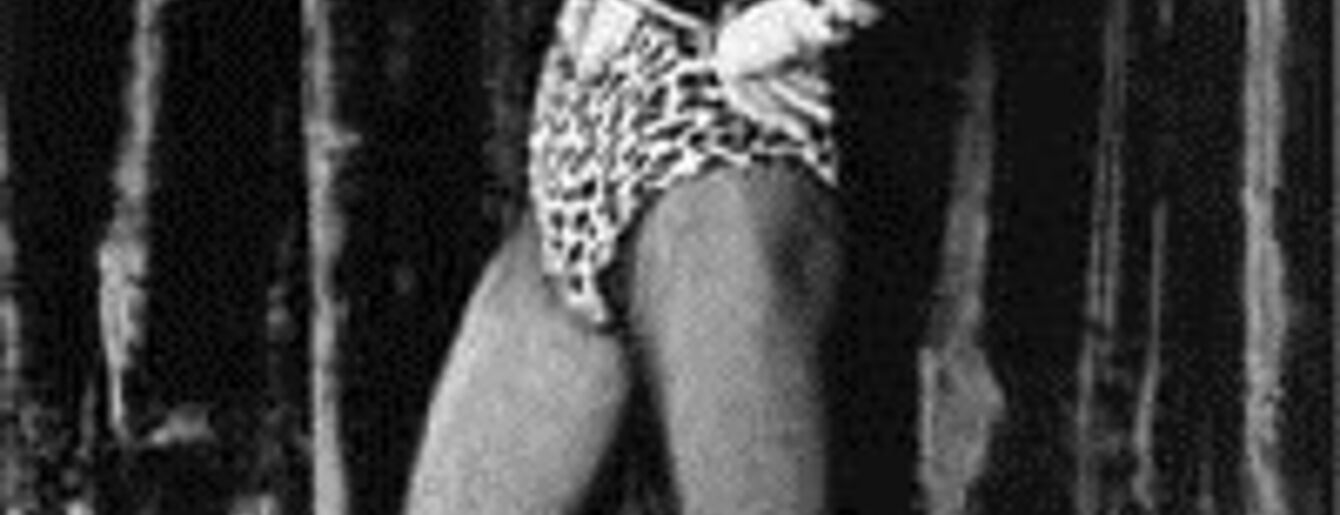
We 18.9.2002 - Fr 18.10.2002
kex—kunsthalle exnergasse
B
LET´S TWIST AGAIN
Opening: Wednesday, 18th September 2002, 7pm
cur: Carola Dertnig und Stefanie Seibold
With work by
AUF - Uli Aigner - Art Party Gang - Renate Bertlmann - Christa Biedermann - Linda Bilda - Linda Christanell - Die Damen - Katrina Daschner - Ricarda Denzer - Ursula Endlicher - Marie Therese Escribano - Valie Export - Die Familie - Penelope Georgiou - Clever Gretel - Oliver Hangl - Hektor und Rositha - Birgit Jürgenssen - Andreas Karner - Renate Kowanz-Kocer - Barbara Kraus - Elke Krystufek - Sabine Marte - Mara Mattuschka - Ursula Mayer - Heidi Melinc - Metamorphosen - Paulo Mezzacapo de Cenzo - Erika Mis-Swoboda - Ariane Müller - Ulrike Müller - Mora & Fur - Geschwister Odradek - Performance Festival 1978 - Claudia Plank & Hans Werner Poschauko - Gertraud Presenhuber - Patricia Reschenbach - Hans Scheirl - Gerhard Stecharnig - Nina Stuhldreher - Matta Wagnest - Susanne Widl - Wiener Dauerwelle
Wednesday 18th September 2002 | 7pm
Opening
Introductory Words: Hemma Schmutz
PERFORMANCE: Barbara Kraus, Mara Mattuschka, Mora & Fur
Saturday 5th October | 7pm - 11pm
as part of The Long Night of Museums - FILMS
"Kallas und Kennedy", 1991, by Penelope Georgiou
"Der Einzug des Rokoko ins Inselreich der Huzzis", 1989, by A. Karner, M. Mattuschka and H.W. Poschauko
"Empty Frames", 1982, by Paolo Mezzocapo de Cenzo
Wednesday 16. October | 7 pm
PERFORMANCE
Oliver Hangl, Hektor und Rositha, Sabine Marte, Nina Stuhldreher
The Exhibition:
The exhibition 'Let's Twist Again' at the Kunsthalle Exnergasse is a presentation of approximately 40 historical and contemporary positions by performance artists in Vienna. The aim is to explore new allusions and cross-references in a history of performance marked by diversity since the 1970s in a local context.
Of particular interest here is work by artists that has been entirely ignored by the official reading of art history for a variety of reasons despite its influence within the artworld, or that has remained largely unknown. The positions being presented have not all been taken from an explicitly art-specific context, and the exhibition also aims to reveal influences that came from other fields, such as theatre, the circus or cabaret.
The focus is primarily on performances addressing feminist themes or issues of gender. This is due to the fact that a conspicuously large number of women have used performance as a kind of 'free space' to be employed to represent their own interests, beyond the endorsed canon of the classical artistic disciplines. The exhibition also reflects the wish to render historical influences visible and to establish what are often surprising links. The aim is to explore differences and parallels to help arrive at a clear positioning of the work concerned: Where does performance in Austria stand today, and what is its history?

